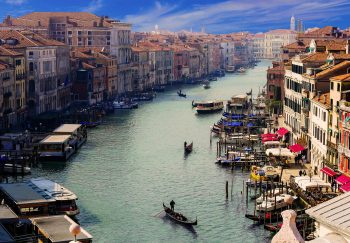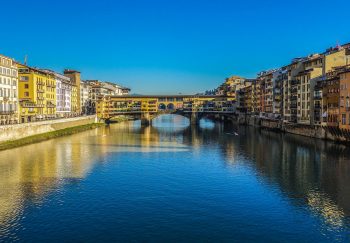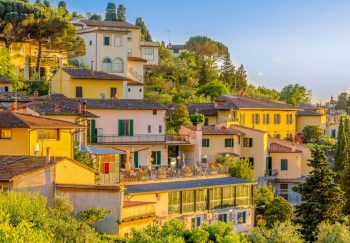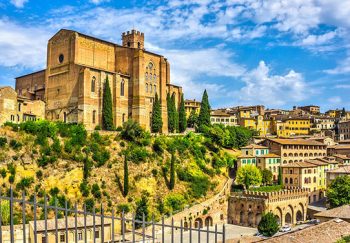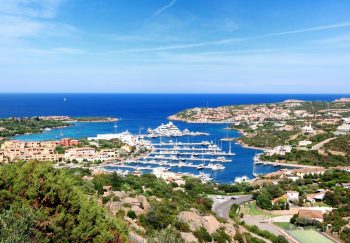“Want to learn more about ancient Greece?” “Come to Sicily!” This 60s slogan explains Sicily’s richness of Greek monuments.
You will get a good idea of the meaning of it by taking a trip from Segesta to the Valley of the Temples via the Cave of Cusa or Selinunte.
First, we see the temple. The ancient city was located on the plateau between the two mountain peaks in the V-IV Century BC. Today, we can still see the Theater, the Sanctuary of the Mango, and the Temple.
The Doric Temple is a stunning structure that commands admiration from the surrounding. The temple’s remarkable artistic and stylistic qualities can be dated to the third decade of the V century, roughly between 430 and 405 BC.
Learn more about the Segesta Temple at izi.
The Segesta Theater
The theater is higher up on Mount Barbaro’s northern slope. It is quite well preserved. The auditorium (cavea) measures approximately 63m in diameter. It was cut from the same rock and partially supported by a limestone wall. Although the auditorium’s upper portion is now gone, it was once enclosed and supported by a huge semicircular wall. A cave is located under the auditorium, which was once sacred and where people may have performed rituals.
The Sanctuary of Mango
The sanctuary was found in an area far from the city, in the Mango district. It is surrounded with a temenos (wall), and blocks roughly squared. It is a beautiful place and well worth visiting. The sanctuary is likely to have been home to several holy buildings. This was evident by the discovery and preservation of many architectural parts (capitals, columns, etc.) as well as a wealth of pottery dating from the eighth century BC to the fifth century BC. Some also display graffiti or inscriptions.
Segesta has seen recent excavations that have exposed, in the north acropolis and south acropolis the remains of a medieval city, Islamic, and Norman.
Cusa
Do you want to see the factory that makes the temples? It is 13km from Selinunte. Here, the limestone columns that were used to build the Temple of Selinunte are found. It is sometimes used as a performance venue. However, it retains the charm of the past. You feel like you are traveling through time. It is like being in a factory full of active temples, an unforgettable feeling.
More information on Segesta’s archaeological site
It is both impressive for its beauty and cultural significance. This archaeological site is quite large, but an electric vehicle service has been offered to make it easier.
Selinunte was spread over a large area. Here, on the eastern hill are the three temples E, G and F.
The G Temple is located to the north of the area. It was intended to be one the most magnificent religious buildings in classical architecture like the temple of Olympian Zeus in Aggento. Construction of temple G began in the 530 BC. but was not finished before Selinunte’s fall. His extraordinary height was approximately 30 meters. It took 40 years to build the temple. The Doric style was more advanced in the west wing, but it still retained the Doric style.
The F Temple, the smallest of the three, used to have six columns at the front and fourteen on the sides.
The E Temple, dating from 460-450 BC. It has a doric form with 6 columns at the front and 15 at the sides. The cell is preceded and supported by two columns by a portico. Following the portico is the adyton, which is a sacred and inaccessible part just above the cell. An earthquake caused the collapse of the 1960-built E temple. The metopes, a wonderful mythological subject, belonged to this temple and are now at the Archaeological Museum of Palermo.
Two other temples were also found in traces.
To the south you will see the remnants of the fortifications which protected the city from the Archaic Age. The Punic City is a sacred place for sacrifices. On the walls is the sign of Tanit, the caduceus and god Taurus.
There are a number of temples that still have the remains of the temple O (Doric) and the temple A (similar to the one above), both of unknown date (490 – 460 BC). This area is home to both public and private temples. Two other places of worship are also visible, the temple A and the Megaron which have Ionic columns and Doric frieze. The temenos is the central point of this huge space. It contains the stunning temple,, which was built partly in 1939 with the help of anastylosis. Doric archaic shows the remains of the 6 columns at the front and 17 on its sides. The cell is preceded by an adyton with four columns.
The Regional Archaeological Museum is home to three metopes from the front. They are the finest examples of selinuntina-sculpture and the clay decoration, floral and geometric tympanum.
To the north, you will find the remains of the Temple D. These are similar to the Temple C. The great porch that delimits the area to the southeast of the temenos is located at the southeast corner. The market was located in the northwest, which included shops, an agora and housing structures. Continue northward and we reach the Acropolis gate, which is surrounded by several towers and fortifications. This was the heart of the Selinuntino defense network.
More info about Selinunte’s archaeological site
